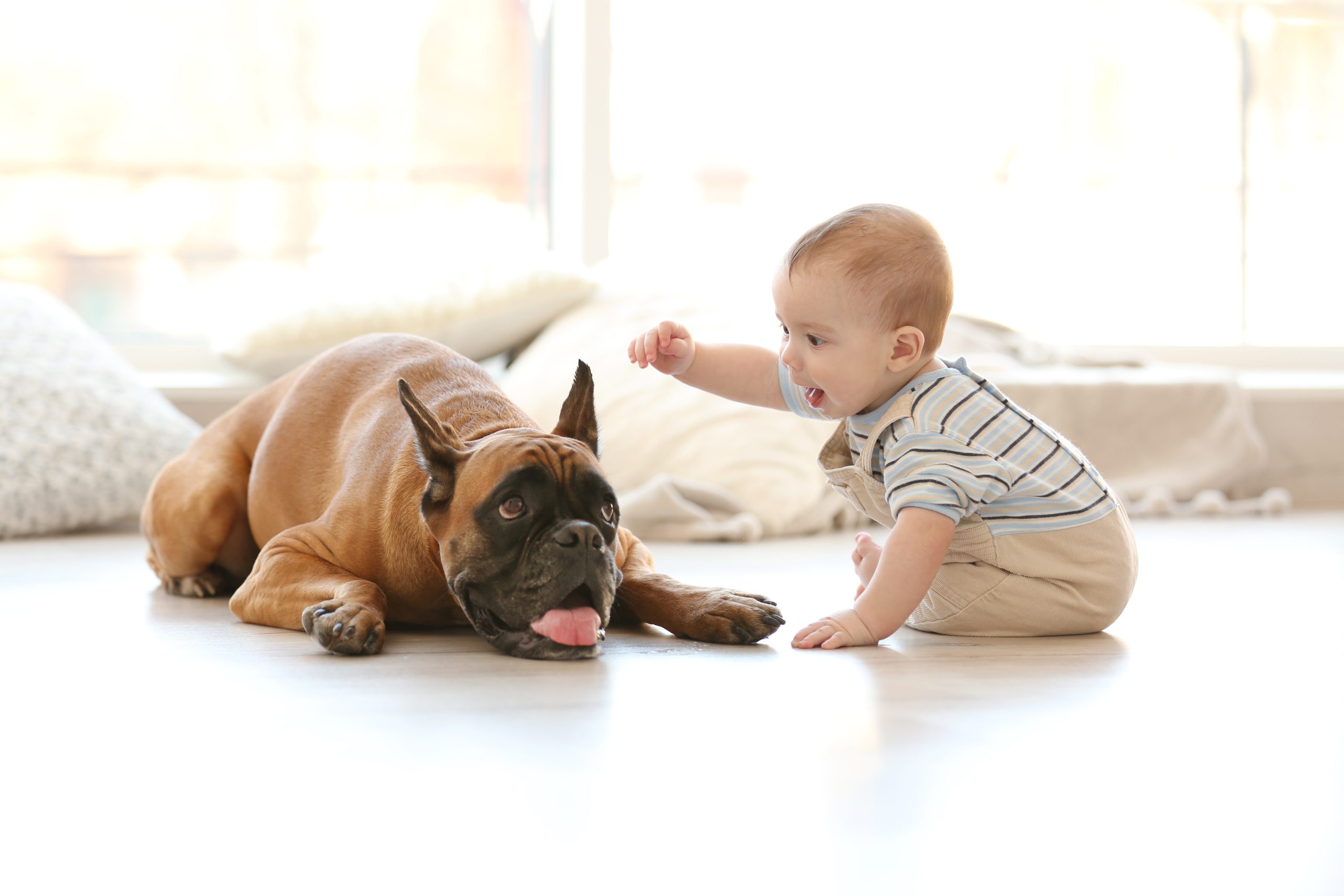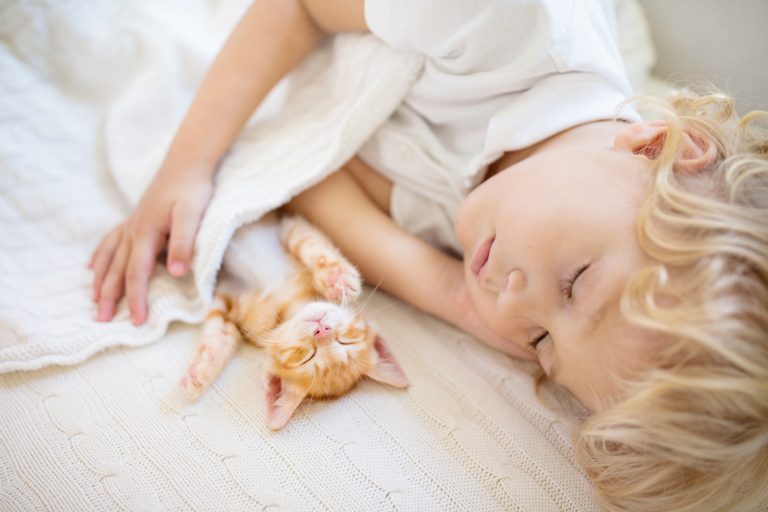If only I could have a puppy… I’d call myself so very lucky… Just to have some company… To share a cup of tea with me! They mean it when they say dogs are people’s best companions, and it is the best feeling for our children to grow up with a best friend in the comfort of their own home. However, it is normal for every parent to have many doubts about raising their children with dogs at home. How do we raise them together, and provide the best for both, helping them form the strongest bond? Trust us when we say it is just as easy and joyous as a puppy rolling around in a pond. Only with a couple of matters to keep in mind, we can raise our little ones together at home, creating the warmest of memories. Let’s discover together!
Benefits of Raising Dogs and Kids Together
Fluffy companions at home come with many benefits for your children. As their bond forms and strengthens, it fosters empathy, responsibility and companionship in your children. Dogs are professionals in comforting people, and their presence is as helpful when it comes to kids as it is to adults. Along with mental health benefits, through their interactions with their canine companions, children can learn about loyalty, patience and unconditional love. This bond can also promote physical activity, as your children are encouraged to play and exercise with their dog. Overall, growing up with a dog can improve many skills, from social to cognitive.
Before Bringing a Dog Home
Most dogs require energy and space, and before bringing one into your home, it is essential to evaluate your family’s lifestyle, available space, and the specific needs of the dog breed you are considering while adopting. Choosing the right dog breed can be beneficial when bringing a canine friend into a household with kids. Breeds like Beagles, Golden Retrievers, and King Charles Spaniels are known for their gentle and friendly nature, making them suitable matches for families considering adopting a dog into their home. Preparing your household for your canine companion is equally important, ensuring your home is dog and children-friendly with safety essentials like safety gates, guards and socket covers pave the road to good and safe memories. Also, providing safe spaces for your dog to retreat when it is overwhelmed protects the well-being of your dog, allowing them to have a healthier relationship with the members of your household with less stress.
Introducing the Dog to Children
Introducing a dog to your children should be a gradual process that takes place in a supervised environment for both your children and the dog to get used to each other comfortably. You can start by letting the dog explore the home while your kids observe from a distance as the dog adjusts itself to its new surroundings. Slowly, you can encourage calm and gentle interactions between them, and teach children to approach their new friend slowly and respectfully. To make sure that the dog feels safe and the children understand how to handle it appropriately, it is important that you supervise them. As time passes and they get used to each other, slowly they are set to have more direct interactions, with praises and treats to reinforce positive behaviour.
Teaching Children About Dogs
For a safe and harmonious journey, it is important that your children are knowledgeable about dogs. Before they meet, you can start by teaching your children about a dog’s body language so that they can recognise stress, fear or aggression and react accordingly. Emphasising that dogs are living beings with their own needs and emotions slowly teaches your kid empathy and respect. Encouraging your children to participate in basic training such as teaching your dog how to sit or hold out a paw can also help strengthen their bond. Last but maybe most important, educate your child about the importance of hygiene when handling dogs for the healthiest relationship. Instilling these lessons early and getting them used to the routine helps ensure a positive and respectful relationship between your kiddo and canine companion.
Health and Safety
For a healthy relationship with little to no bumps, prioritising health and safety is essential when raising dogs and children under the same roof. By being up to date on your dog’s vaccinations, checking on fleas, and with regular vet checks to ensure there are no ongoing issues we can protect both our little ones and canine companions. Supervising interactions, especially during plays to prevent accidental bites or scratches also protects your little ones from small injuries. Teach your children to not disturb a dog while eating, sleeping or caring for puppies if there are any, as these are times when a dog may be more protective and have more tendencies to resort to aggression. Additionally, keep dog food, toys, and other supplies out of reach or under supervision to avoid choking hazards. Maintaining a clean environment by regularly grooming your dog and cleaning its living area is also key for both your dog’s and your family members’ health.
Responsibilities for Your Children
Having responsibilities teaches children valuable life skills at an early age, and getting a dog comes with many responsibilities. By assigning age-appropriate tasks such as feeding it, refilling its water bowl, helping with grooming, teaching it basic commands and participating in walks or playtime, you can help your children understand the daily needs of their pet and feel more involved as a responsible member of the household. Encouraging your child to participate in walks and playtime not only helps with teaching them the physical needs of animals and the responsibilities they bring but also promotes physical activity and helps them have a stronger bond with their canine companion. Praising and rewarding your children for fulfilling their responsibilities reinforces the importance of consistency, and encourages them to participate more and willingly.
Daily Care and Interaction
Consistency always benefits everyone and can be such a great help when it comes to taking care of dogs and children at the same time. Dogs require constant care and attention, so establishing a routine of regular feeding, grooming or playtime keeps them in a good mood, making them feel sound. Having a routine also makes it easier to track tasks, and not miss anything. Teaching your kid how to take care of the dog and engaging them in interactive play with the dog using toys like plushies, balls, laser pointers, and ropes without over-exerting the dog not only provides the necessary exercise but also keeps them in a good mood, and allows them to trust your children. When they both feel like not playing but lazing around, preparing them areas where they can spend cosy times together, watching TV, chilling or sunbathing, with soft blankets or towels to provide them a cosy environment, helps them spend more time together. These activities make room for positive interactions, enhancing their relationship.
Facing the Challenges
Both your dog and your children can encounter challenges while getting used to each other, and patience and care are key when integrating a dog into your household. Encouraging patience as the dog and children get used to each other, and teaching your kid about the cat as much as possible helps build trust over time. If you encounter any behavioural issues, they should be addressed as quickly as possible, and if the dog shows signs of stress or aggression, consulting a veterinarian or a professional animal behaviourist is advisable. By addressing challenges quickly, you can foster a positive relationship between your children and your canine companion, creating a safe environment filled with love for everyone.




